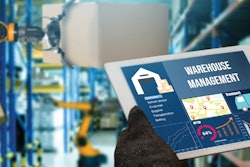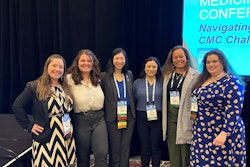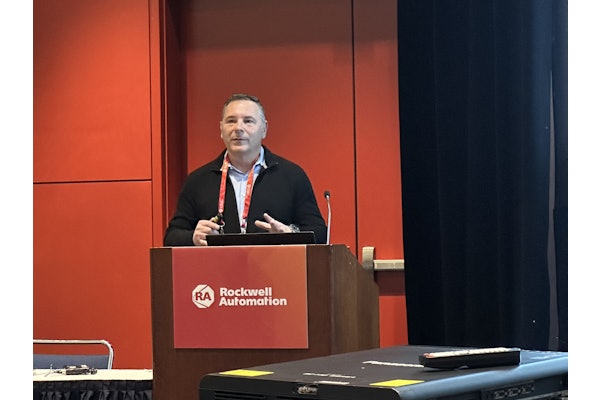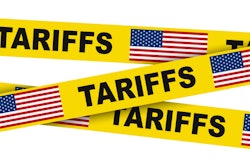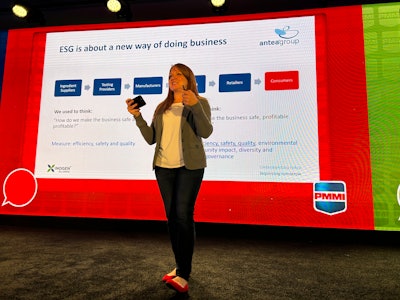
While ESG (Environmental, Social and Governance) reporting may now be on OEM radars, most are just getting started with it. Recognizing that nearly everyone is a novice to ESG, Tracy Taszarek from Antea Group USA – a consultancy that helps companies get their ESG house in order – offered a beginners’ overview of the key concepts of ESG to attendees of the 2023 PMMI Annual Meeting, which ran October 16-18 in Stone Mountain, Ga.
Calling ESG a "new way of doing business," Taszarek said that while some businesses have initially dismissed ESG as a passing trend, it appears that ESG is here to stay and manufacturers need to prepare for it. The big challenge is: not only do companies have to take the ESG initiatives, but they also have to measure and report it.
Taszarek, who came from the world of Environmental Health and Safety (EHS) consulting, drew a line between EHS and ESG. While EHS typically focuses on compliance with environmental regulations and the safety of employees, ESG goes beyond compliance to look at how a company is impacting the environment and society.
“When ESG was first emerging, it was focused on the financial sector as a way for investors to take a look at how they were doing and how sustainable they were so that investors could make strategic investments,” said Taszarek. “But now we have grown beyond that, so that the stakeholders are no longer just those investors but have become your customers and your employees.”
Younger generations are particularly keen stakeholders, Taszarek said. Supporting companies that align with their values, they scrutinize ESG data, including corporate websites, to evaluate how a company affects the environment and society. For these and myriad other reasons, manufacturers must take ESG seriously to remain attractive to both customers and potential employees.
Regulations, standards and ‘alphabet soup’
With the growing importance of ESG, regulations and standards are emerging globally, each with a different acronym – which Taszarek jokingly referred to as EGS’s “alphabet soup.”
Protocols such as GHG (Greenhouse Gas Emissions) and the EU CSRD (Corporate Sustainability Reporting Directive) policy are now dominating the ESG field. These regulations either currently require or will soon require companies to disclose information about their environmental and social practices, sometimes extending throughout their supply chain.
Many of the reporting requirements are coming out of the GHG Scope 1, 2, and 3 directives. For instance, depending on the protocol, companies may need to report Scope 1 (direct emissions from plant and vehicles), Scope 2 (indirect emissions from purchased energy), and Scope 3 (any other emissions from the entire supply chain). Under the recently implemented CSRD, U.S. companies that have operations in or do business in the European Union will be required to disclose emissions information about their entire supply chain (Scopes 1-3).
There are various regional laws going under effect too, such as the German SCDDA (Supply Chain Due Diligence Act), which requires reporting on environmental and social policies. California's new SB 253 and SB 261 climate legislation will require specific disclosures from companies operating in that state on greenhouse gas emissions. Expect other U.S. states to follow suit, Taszarek said.
Then, there’s the Expanded Producer Responsibility, a strategy in which a producer’s responsibility for a product is extended to the post-consumer stage of a product’s life cycle, away from municipalities and back to the manufacturer. While no regulations are being enforced, many regions, especially in the EU, are now proactively adopting the approach in local laws.
In the U.S., a proposal from the U.S. Securities and Exchange Commission (SEC) would require U.S.-based companies to start disclosing Scope 1, 2, and 3 emissions, with the requirements about who has to report depending on size and industry. “Bigger companies will be required to report on their Scope 3 Greenhouse Gas Emissions, which is all the way down the supply chain and not just their immediate GHG,” Taszarek noted.
ESG is not just about your company. Taszarek explained that because of Scope 3, which analyzes emissions throughout the supply chain, it’s likely that soon, some of your consumer packaged goods (CPG) customers will be coming to you for information on your machines, your plant’s emission and more for help with their ESG reporting.
From acronyms to action
So how can an OEM stay safe, sustainable, and profitable?
It may seem like a daunting challenge, but Taszarek highlighted several ESG strategies that encompass a broad spectrum of practices, starting with the E in ESG: the environment. These strategies include reducing industrial waste, adopting renewable energy sources, improving water usage efficiency, and promoting recycling and circularity.
On the social side, companies with established safety programs, documented health and safety practices, and training for employees are already taking steps toward ESG, Taszarek said. Workforce development opportunities and adherence to the Supplier Code of Conduct, which covers child labor, environmental policies, and ethics, are also essential aspects of the social component.
For governance, transparency is crucial. Companies need to make information about their board of directors and organizational structure publicly available. Cybersecurity practices that you can share with customers about how you are protecting their data are becoming increasingly important.
The ESG journey
Manufacturers may find themselves at different stages on the ESG journey, ranging from “we just found out about this” to a reactive state. Others are in more advanced, strategic positions. Wherever they find themselves on the spectrum, OEMs that are doing ESG will be transforming themselves and telling the world about it through proactive reporting in the years to come.
Taszarek stressed that getting started with ESG need not be overwhelming. It first involves identifying key areas of focus, conducting a baseline assessment, and benchmarking against competitors. A materiality assessment can further help manufacturers determine what stakeholders are most concerned about, guiding where to focus ESG efforts.
ESG is no longer a niche concept but a fundamental aspect of business in the 21st century, especially for those with operations outside the U.S. The journey may seem daunting, but with the right strategy, commitment, and reporting resources in place, OEMs can thrive in the increasingly ESG-focused manufacturing world.


